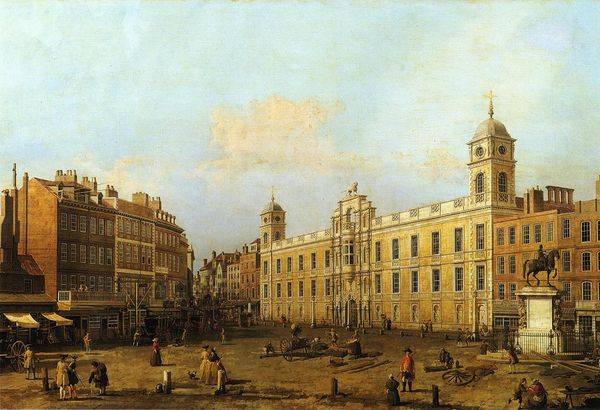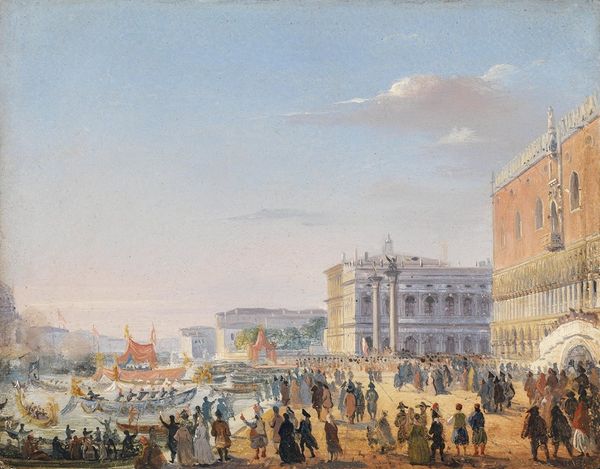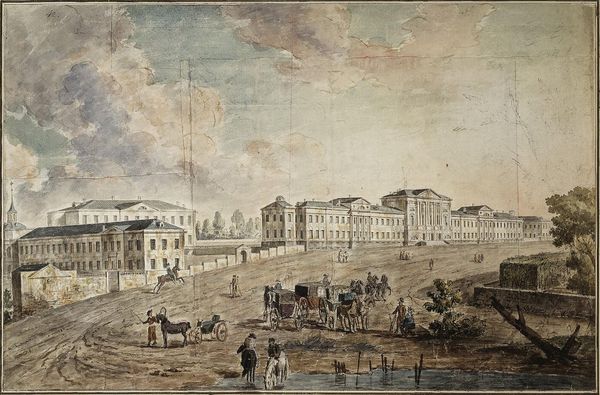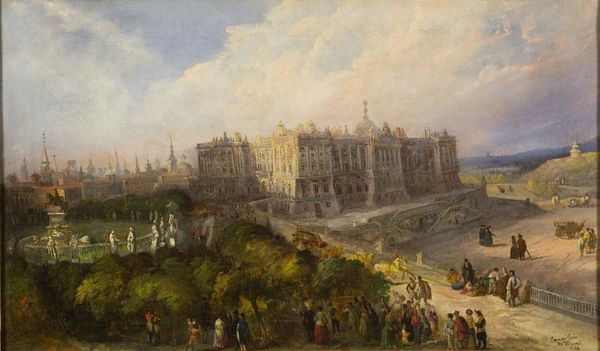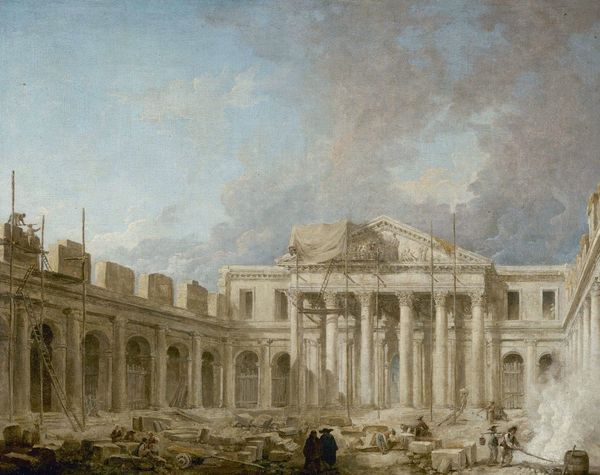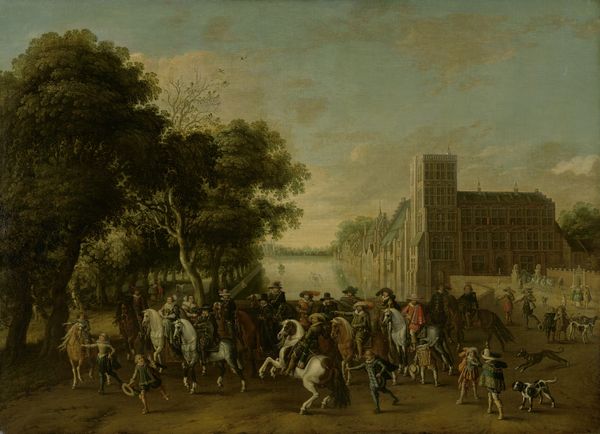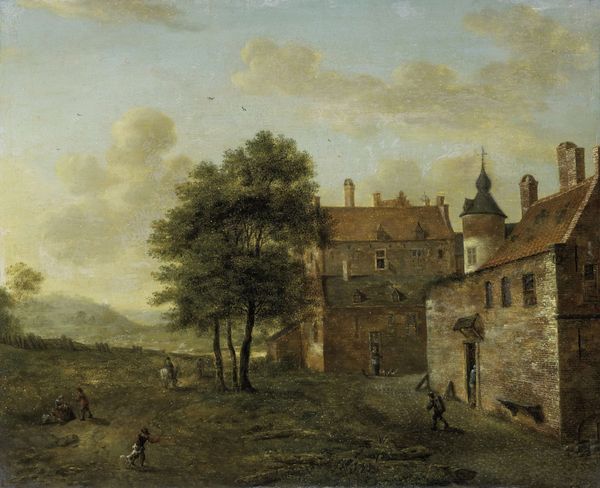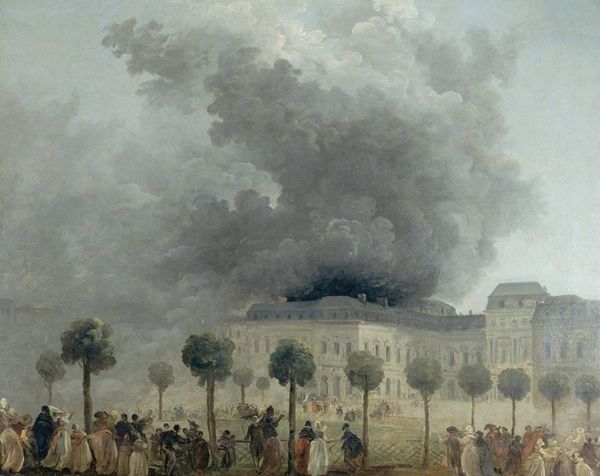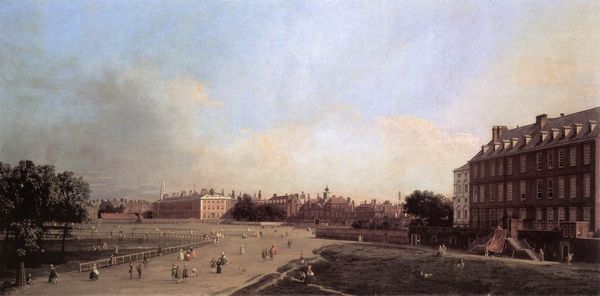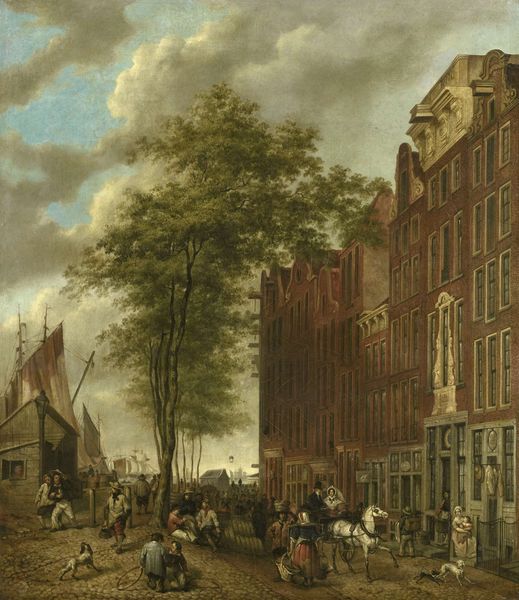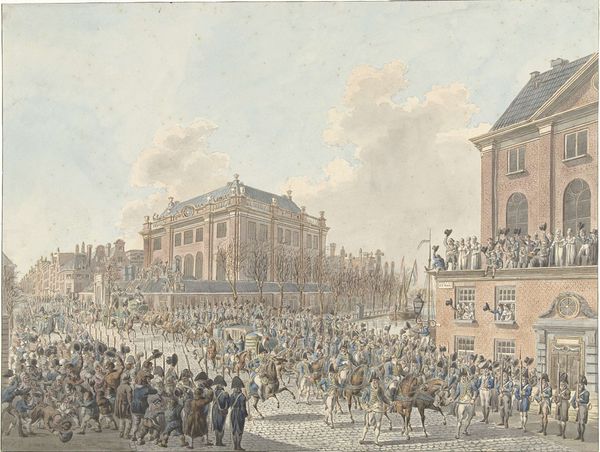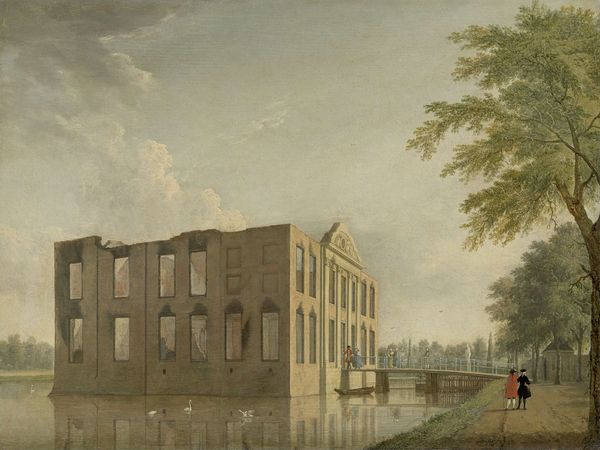
#
abstract painting
#
abandoned
#
landscape
#
possibly oil pastel
#
oil painting
#
derelict
#
acrylic on canvas
#
street graffiti
#
underpainting
#
painting painterly
#
watercolor
Copyright: Public Domain: Artvee
Editor: This is Hubert Robert’s *Recreation of Prisoners at Saint-Lazare; the Ball Game*, painted in 1794. The long shadows and pale sky give it a strangely peaceful feeling despite the context. I'm curious, what aspects stand out to you in this piece? Curator: What strikes me immediately is the institutional space, Saint-Lazare, transformed into a theater of social observation during the French Revolution. Robert, himself imprisoned there, cleverly documents the paradoxical freedom found even within confinement. Consider how the architecture dominates the composition; it’s not merely a backdrop but an active character shaping the prisoners' existence. Editor: It's like the building is both a cage and a stage, isn’t it? All those figures arranged so neatly in the courtyard make me wonder how Robert really viewed these individuals: a unified mass, or as isolated characters, unified by their incarceration? Curator: Exactly! It speaks to the social complexities of imprisonment during a period of revolutionary upheaval. Were these individuals perceived as a threat to the state, or simply victims of circumstance? Robert, by portraying them engaged in leisure, perhaps aimed to humanize the incarcerated in the face of growing political paranoia. How does that inform your view of the work? Editor: That perspective gives so much depth to a seemingly simple scene. I initially saw it as a picturesque genre painting. However, considering the revolutionary context and Robert's imprisonment, it shows that public spaces like Saint-Lazare could become stages of political and personal drama. I wonder if period gallery goers picked up on the subtleties. Curator: Indeed, this complicates our reading of the picturesque, as you suggested. This helps to see past just the beauty to the cultural forces behind it. Editor: This was definitely illuminating, moving past aesthetic to see artwork as an artifact.
Comments
No comments
Be the first to comment and join the conversation on the ultimate creative platform.
